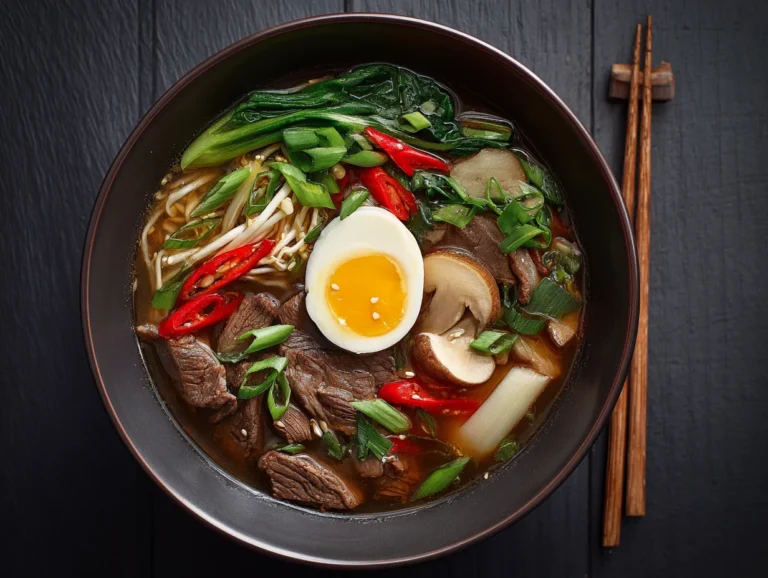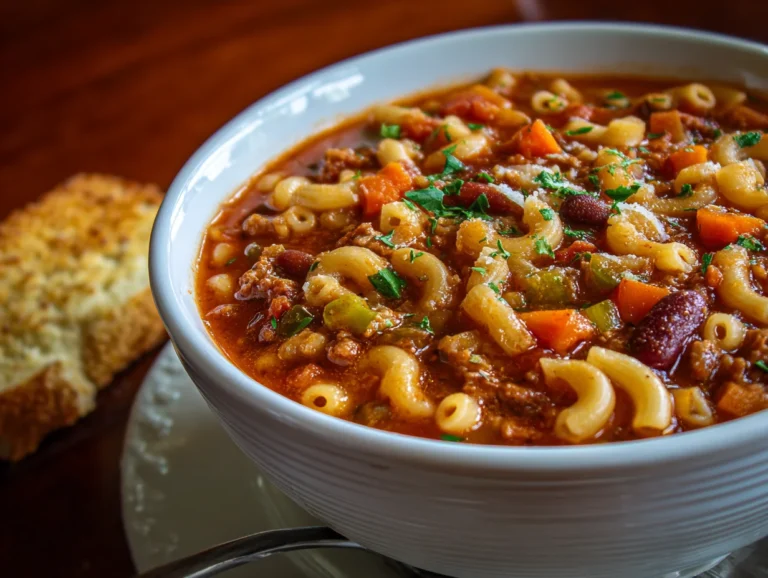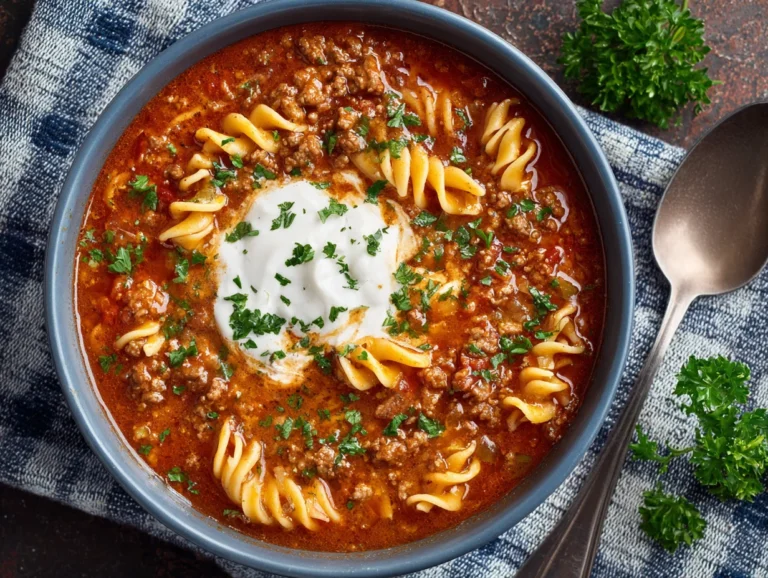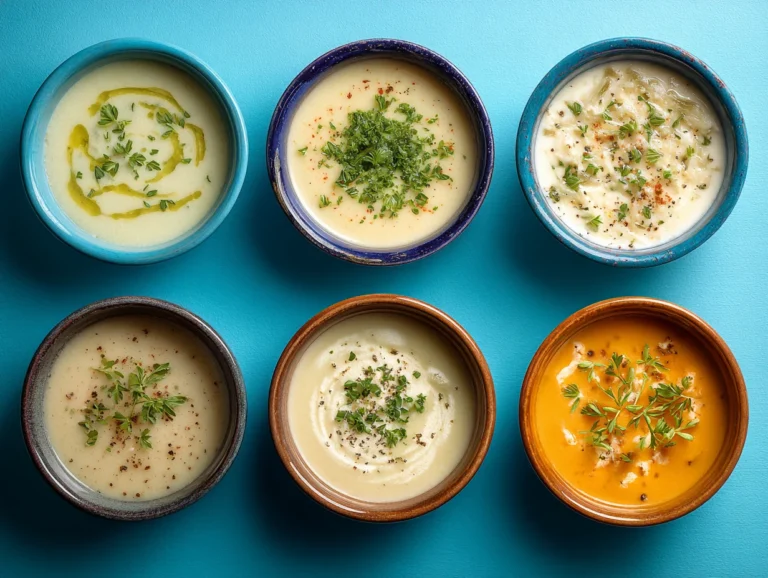10 Delicious Korean Soup Recipes
Introduction
As an expert chef passionate about Asian cuisine, I consider Korean soups (guk, jjigae, and tang) to be a true celebration of depth, balance, and artistry. These recipes go beyond simple sustenance — they offer medicinal benefits, vibrant umami, and bold layers of flavor that can only come from centuries of culinary tradition. Below are 10 carefully curated, SEO-optimized Korean soup recipes that are easy to follow yet crafted at a chef’s level, honoring the soul of Korean kitchens.
1. Kimchi Jjigae (Kimchi Stew)
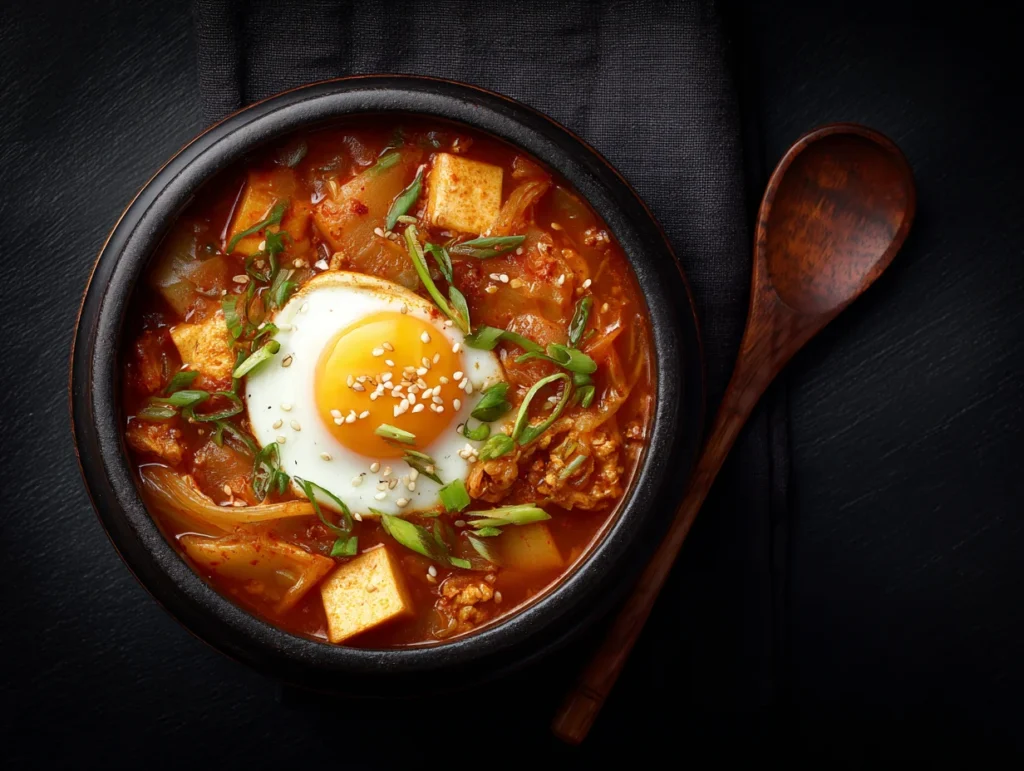
Why it’s healthy: This probiotic-rich stew improves gut health, boosts immunity with fermented vegetables, and has a spicy kick that aids metabolism while staying light on calories.
Ingredients:
- 1 cup aged kimchi, chopped
- 200 g pork belly, sliced thin
- 3 cups (750 ml) anchovy or beef stock
- 1 block (150 g) tofu, cubed
- 1 tbsp gochugaru (Korean chili flakes)
- 2 green onions, sliced
- 1 tsp sesame oil
Chef’s Technique: Cook the pork first to release fat and flavor, then simmer the kimchi in stock to deepen the tangy-sour profile.
Pro Tip: Use extra-old kimchi for more complex and intense flavor.
2. Doenjang Jjigae (Soybean Paste Stew)
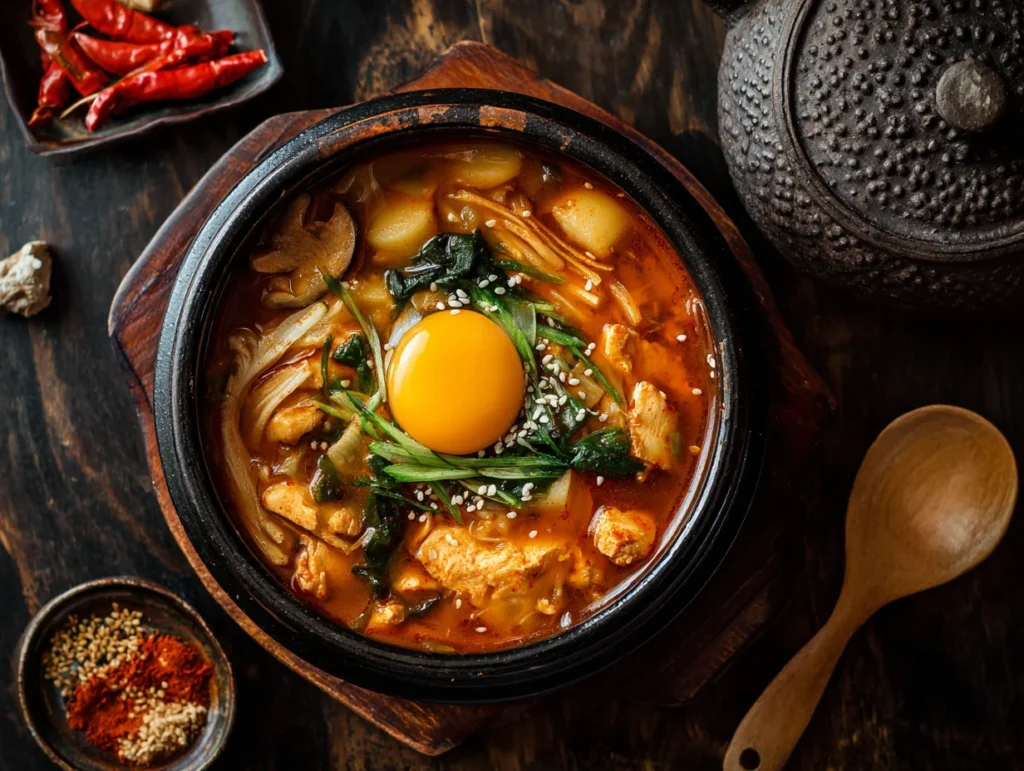
Why it’s healthy: Doenjang is rich in isoflavones and probiotics, supporting cardiovascular health and digestion, and the vegetables pack antioxidants in a warm, hearty broth.
Ingredients:
- 2 tbsp doenjang (fermented soybean paste)
- 3 cups (750 ml) water or kelp stock
- 1 zucchini, sliced
- 1 potato, cubed
- ½ onion, chopped
- 100 g enoki mushrooms
- 1 block tofu, cubed
Chef’s Technique: Dissolve doenjang in warm stock before adding vegetables to avoid clumps and to build flavor evenly.
Pro Tip: Add a few slices of fresh chili for a mild heat that balances the earthiness.
3. Seolleongtang (Ox Bone Soup)
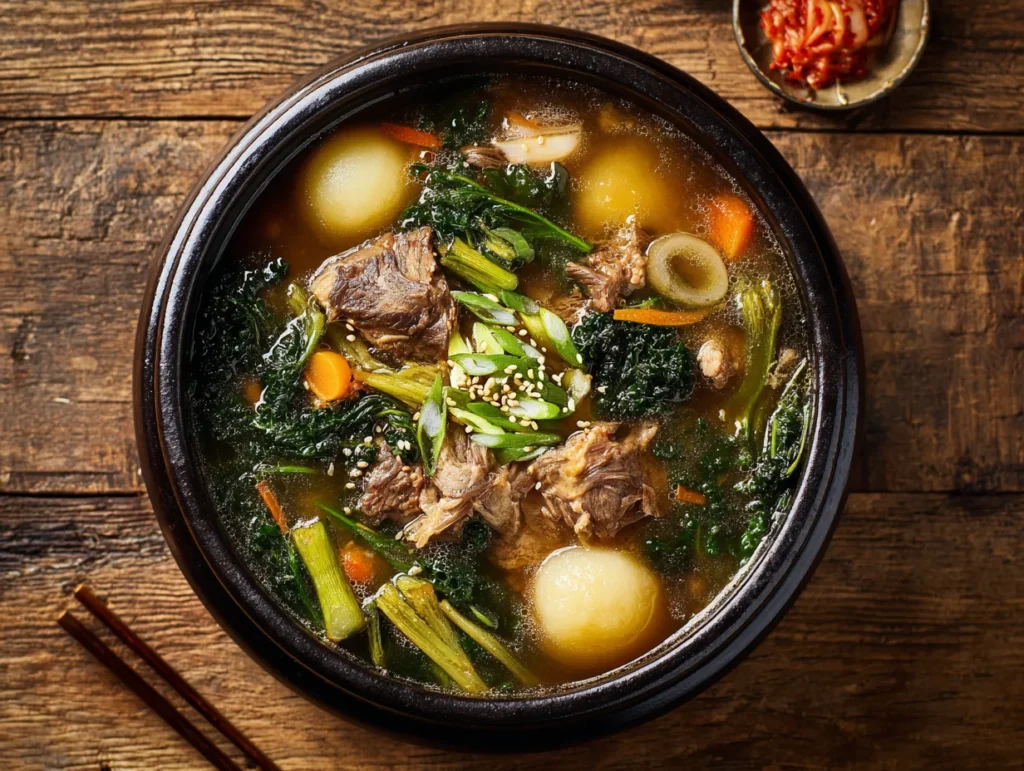
Why it’s healthy: Made by simmering beef bones for hours, it delivers collagen, minerals, and a rich yet low-fat broth that nourishes and energizes the body.
Ingredients:
- 1 kg beef leg bones
- 500 g brisket
- 10 cups (2.5 liters) water
- Salt & pepper to taste
- 2 green onions, sliced for garnish
Chef’s Technique: Rinse bones thoroughly and simmer slowly to achieve a milky white broth without cloudiness.
Pro Tip: Chill overnight and skim fat for a cleaner taste.
4. Samgyetang (Ginseng Chicken Soup)
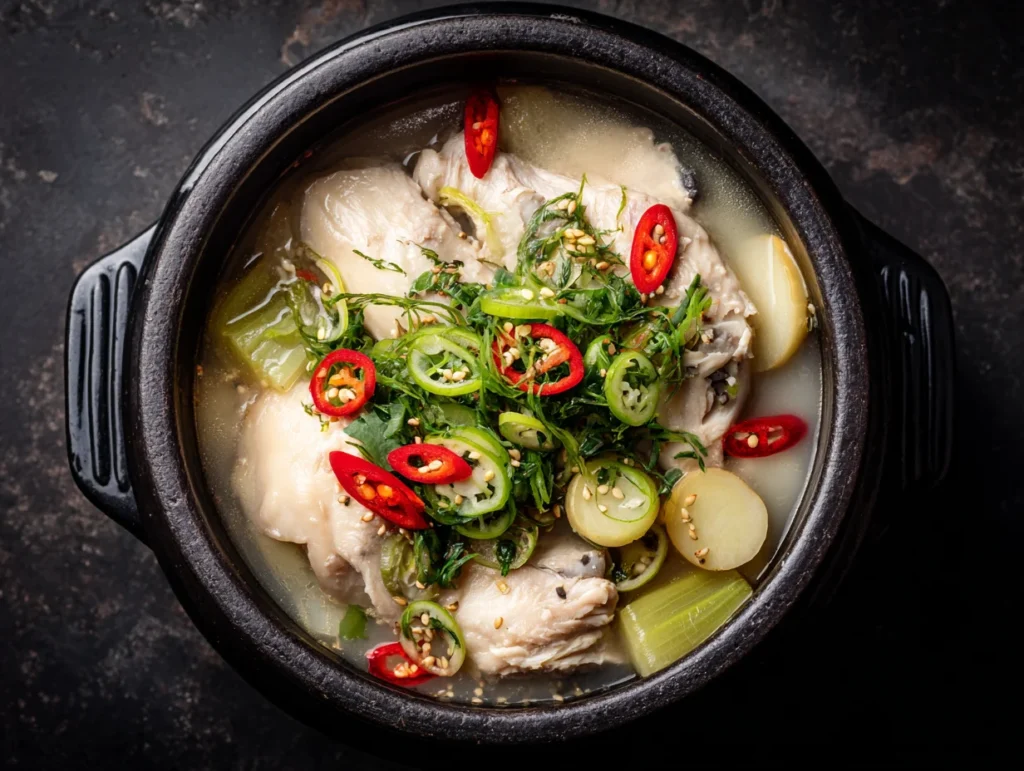
Why it’s healthy: Traditionally eaten in summer for stamina, ginseng boosts immunity, jujubes and garlic improve circulation, and lean chicken provides protein without heaviness.
Ingredients:
- 1 small whole chicken (about 1 kg)
- ½ cup glutinous rice
- 2–3 cloves garlic
- 2 jujubes (Korean dates)
- 2 slices ginseng root
- 5 cups (1.25 liters) water
Chef’s Technique: Stuff the chicken with rice, jujubes, and ginseng, then simmer gently to infuse flavors without tearing the meat.
Pro Tip: Serve with a sprinkle of sea salt and chopped scallions tableside.
5. Sundubu Jjigae (Soft Tofu Stew)

Why it’s healthy: High-protein soft tofu, vegetables, and spicy broth make this dish warming yet light, promoting satiety without excess fat or carbs.
Ingredients:
- 1 tube soft tofu
- 200 g clams or shrimp
- 2 cups (500 ml) anchovy broth
- 1 egg
- 1 tbsp gochugaru
- 1 clove garlic, minced
- 1 tsp sesame oil
Chef’s Technique: Add tofu last and break it gently in the pot to preserve its silken texture.
Pro Tip: Crack an egg into the bubbling stew just before serving for extra richness.
6. Miyeok Guk (Seaweed Soup)

Why it’s healthy: Traditionally eaten postpartum, this iodine-rich seaweed soup supports thyroid health and replenishes essential minerals.
Ingredients:
- 20 g dried miyeok (wakame seaweed), soaked
- 100 g beef slices or mussels
- 5 cups (1.25 liters) beef broth
- 1 clove garlic, minced
- 1 tsp sesame oil
- Soy sauce to taste
Chef’s Technique: Sauté the soaked seaweed with beef before adding broth for deeper umami.
Pro Tip: Use light soy sauce to maintain the beautiful green color.
7. Gamjatang (Spicy Pork Bone Soup)
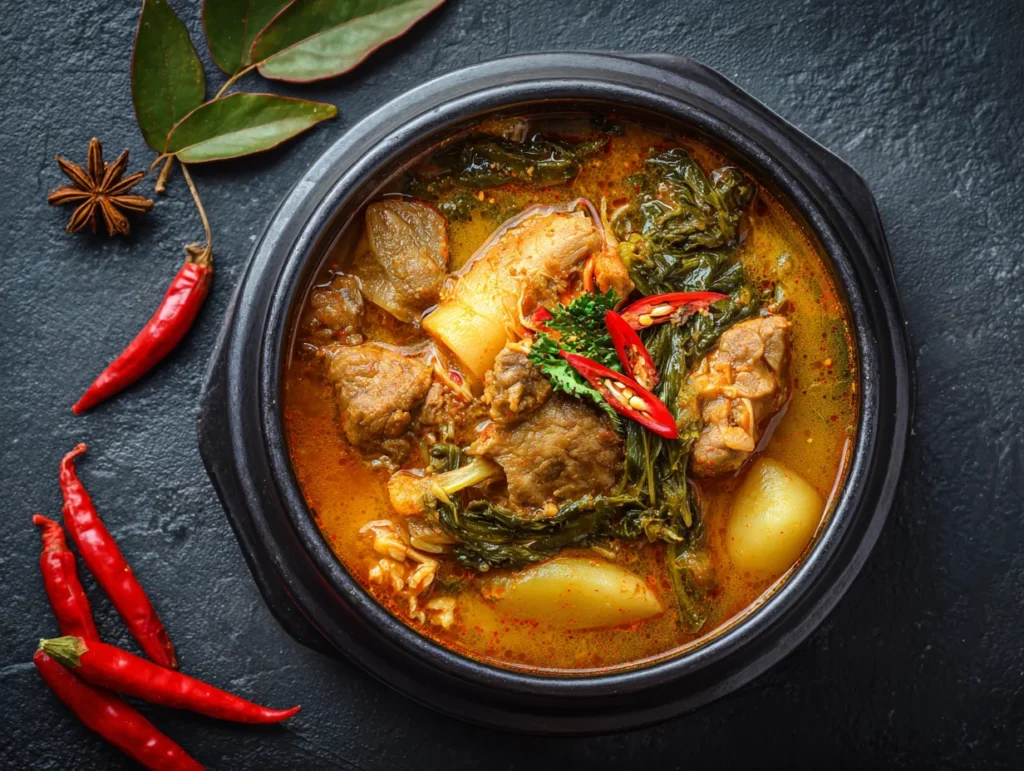
Why it’s healthy: Packed with calcium and protein from pork bones, spicy broth aids circulation, and the potatoes provide fiber without excessive starchiness.
Ingredients:
- 800 g pork neck bones
- 2 potatoes, quartered
- 2 tbsp gochugaru
- 1 tbsp doenjang
- 2 cups napa cabbage
- 1 leek, sliced
- Perilla seeds (optional)
Chef’s Technique: Boil bones, then rinse and re-boil for a cleaner yet flavorful broth.
Pro Tip: Sprinkle crushed perilla seeds for a nutty, aromatic finish.
8. Kongnamul Guk (Soybean Sprout Soup)
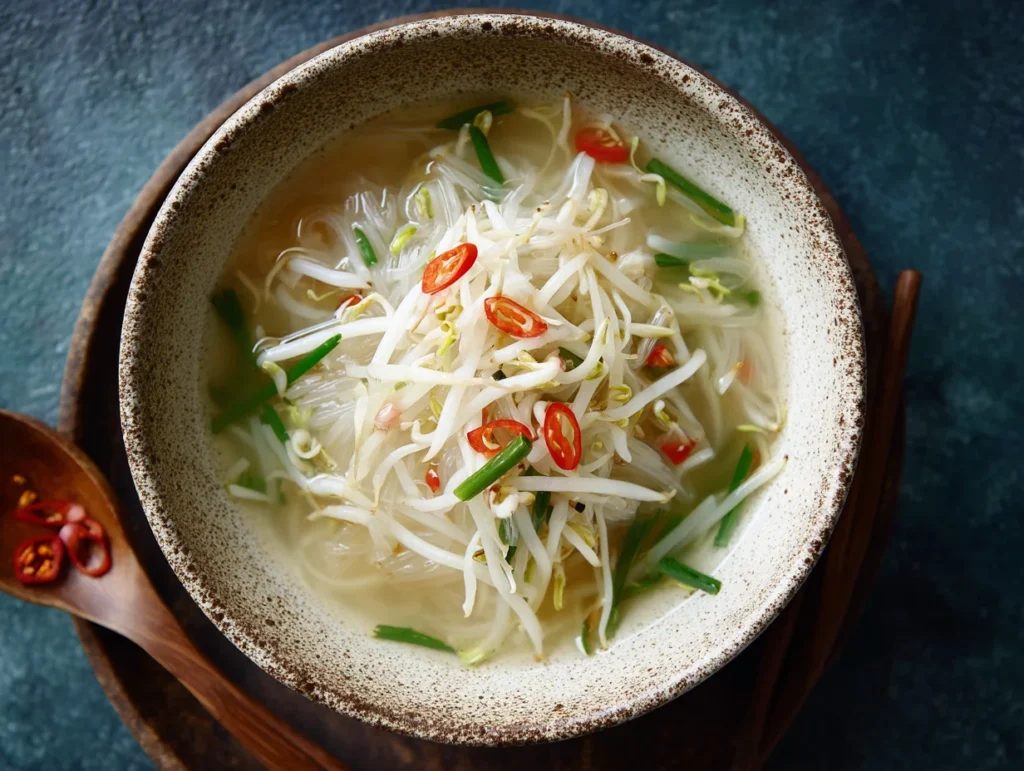
Why it’s healthy: Low-calorie, high-fiber, and full of vitamins, this refreshing soup is excellent for detoxing and hangover relief.
Ingredients:
- 2 cups soybean sprouts, cleaned
- 4 cups (1 liter) water
- 1 garlic clove, minced
- 1 green chili, sliced
- 1 tsp sesame oil
- Salt to taste
Chef’s Technique: Keep the pot uncovered while boiling to prevent “beany” odor and maintain brightness.
Pro Tip: Serve with a side of kimchi for contrast and extra probiotics.
9. Mandu Guk (Dumpling Soup)
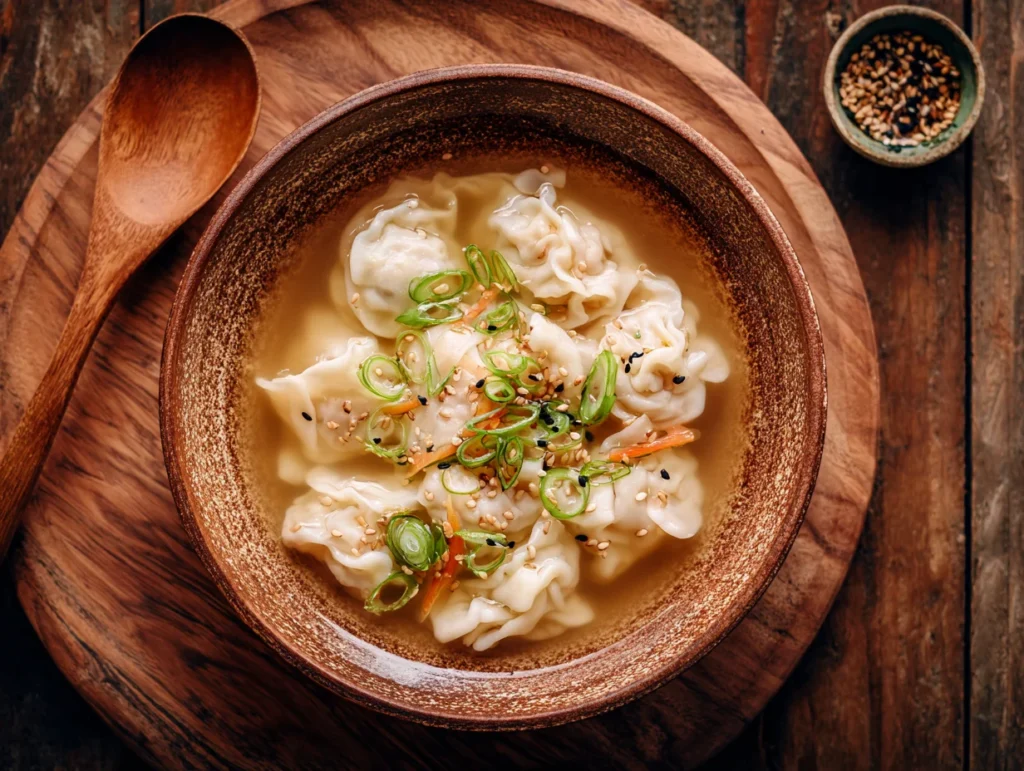
Why it’s healthy: Steamed dumplings in a light broth make this satisfying without being overly caloric, and you can use vegetable-filled mandu for a healthier choice.
Ingredients:
- 6–8 mandu (Korean dumplings)
- 4 cups beef or anchovy broth
- 1 egg, beaten
- 2 green onions, sliced
- 1 sheet gim (seaweed), shredded
Chef’s Technique: Pour beaten egg slowly into simmering broth to create delicate ribbons before adding mandu.
Pro Tip: Use homemade mandu with more vegetables and less meat to lighten it further.
10. Yukgaejang (Spicy Beef Soup)
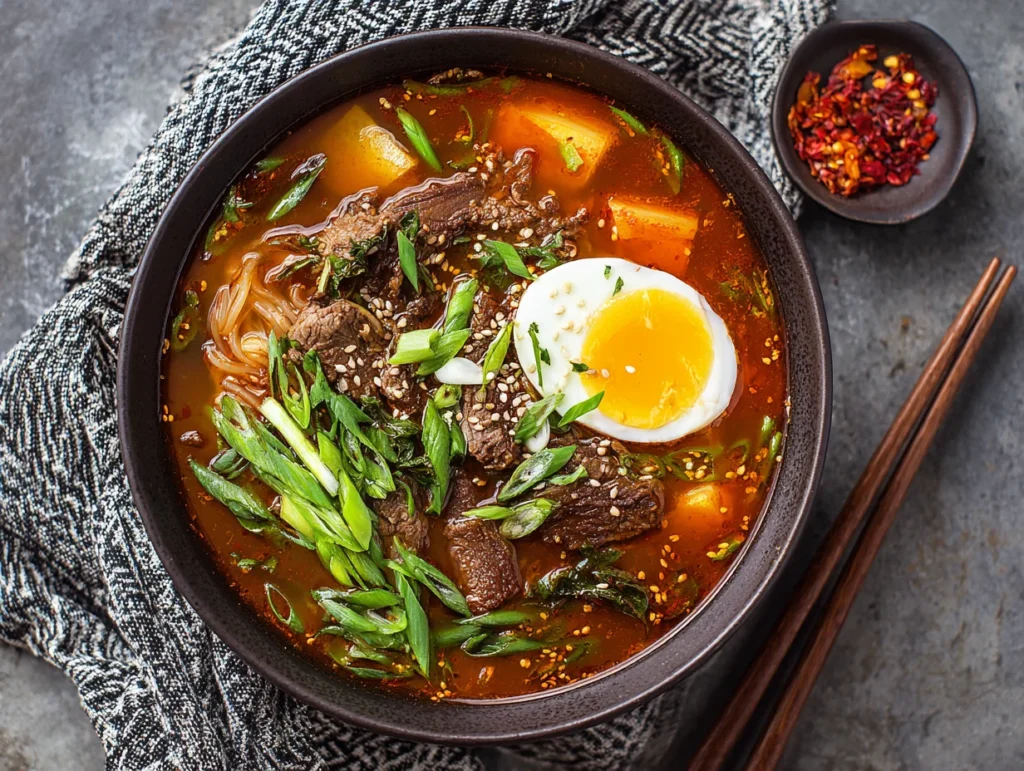
Why it’s healthy: Lean beef and lots of vegetables simmered with chili create a deeply satisfying, metabolism-boosting dish packed with flavor and nutrients.
Ingredients:
- 300 g brisket
- 5 cups (1.25 liters) water
- 1 cup fernbrake (gosari), soaked
- 1 leek, sliced
- 1 tbsp gochugaru
- 2 tbsp soy sauce
- 1 tsp sesame oil
Chef’s Technique: Shred cooked beef by hand and simmer again to let the meat soak up the spicy broth fully.
Pro Tip: A few drops of sesame oil just before serving enhance aroma and mouthfeel.
Why These Healthy Soups Stand Out
Culinary Techniques: Each recipe utilizes authentic Korean methods — from clarifying bone broth to layering fermented flavors — elevating simple ingredients into restaurant-quality dishes.
Nutritional Integrity: These soups harness the power of natural probiotics, minerals, and lean proteins to promote balance, immunity, and vitality without excess fat or calories.
Instagram-Worthy Presentation: The vibrant reds of gochugaru, greens of seaweed, and creamy whites of tofu create dramatic color contrasts perfect for stunning photos.
SEO-Optimized Recipe Format: Structured for readers and search engines alike, each recipe offers clear steps, relevant keywords, and mouth-watering descriptions to engage and rank effectively.
Final Thoughts
Korean soups are more than just comfort food — they’re soulful, healing, and artfully crafted experiences in a bowl. These 10 recipes blend health, tradition, and gourmet technique, allowing you to bring the authentic warmth of Korean kitchens to your own table with ease and elegance. Let your ladle dip into these broths, and you’ll taste the centuries of wisdom in every spoonful.


